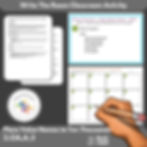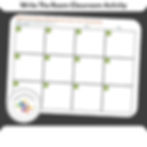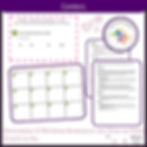Setting the Stage for Success
Special education lesson plans are tailored to meet the unique needs of learners with disabilities, focusing on individual strengths, needs, and goals. Unlike traditional educational approaches, these plans encompass academics, social skills, life skills, and independence. Teachers spend significant time crafting and adjusting these plans to ensure they cater to each student's learning journey. Success in special education is not just about grades; it's about making progress, no matter how small.

Key Takeaway
Success in special education is about celebrating individual progress and meeting personalized milestones through well-crafted, adaptable lesson plans that incorporate inclusive materials, tailored assessments, scaffolding, and active collaboration between teachers, students, and parents.
Defining Success in Special Education
Success in special education transcends grades and test scores. It’s about personal growth and achieving individualized goals. For instance, success could be a student mastering a new word, improving social skills, or participating more actively in class. Using Individualized Education Programs (IEPs), teachers set specific, achievable objectives. Each step forward, no matter how small, is a victory worth celebrating.
Key Components of an Effective Special Education Lesson Plan
Clear, Measurable Objectives: Goals should be specific, achievable, and tailored to each student's needs. Clear objectives make tracking progress straightforward.
Adaptability: Lesson plans must be flexible to adjust to the student's learning pace and any unforeseen challenges. Adaptability ensures the plan evolves as the student progresses.
Inclusive Materials and Methods: Resources should cater to various learning styles and disabilities. This includes visual aids, simplified texts, and other tools that make learning accessible.
Tailored Assessment Methods: Traditional tests may not be suitable for all students. Alternative assessments like portfolio reviews or practical demonstrations can provide a more accurate picture of progress.
Student-Teacher Collaboration: Involving students in the planning process boosts engagement and ensures the plan aligns with their interests and strengths.
Establishing Clear, Measurable Goals
To measure success effectively, goals must be clear and measurable. Start by assessing the student's current abilities and then set specific targets. For example, a goal could be "increase reading speed by 20 words per minute" or "learn five new signs in sign language each week." These goals act as checkpoints, guiding the student's progress and ensuring achievements are celebrated.
Customizing Assessments for Individual Needs
Each student's journey in special education is unique, requiring customized assessments. Success might be mastering a new word or improving social skills. Using a variety of assessment methods, such as observations, projects, and self-assessments, helps track progress tailored to individual needs.
Using Qualitative and Quantitative Metrics
Combining qualitative and quantitative metrics provides a comprehensive view of a student's progress. Quantitative metrics include test scores and assignment completion rates, while qualitative metrics focus on observations like self-esteem and class participation. Both types of metrics are crucial to understanding and celebrating each student's unique progress.
Tools and Technologies to Monitor Progress
Utilize tools like IEP software, digital portfolios, behavior tracking apps, and adaptive learning software to monitor and support student progress. These technologies help tailor lesson plans and provide real-time feedback, enhancing the learning experience for students with special needs.
Scaffolding Skills for Success
One key component of scaffolding is identifying the skill you want a student to perform and understanding the prerequisite skills they must have to master it. Scaffolding breaks down learning into manageable chunks and provides a supportive structure to help students achieve their goals.
Example Scenario: Reading Comprehension
Skill to Master: Understanding a short story
Prerequisite Skills:
Recognizing sight words
Understanding basic sentence structure
Identifying main ideas and supporting details
Student Scenario: Emily, a 10-year-old with a learning disability, struggles with reading comprehension. To help her master the skill of understanding a short story, her teacher, Ms. Johnson, implements scaffolding techniques:
Assessment of Prerequisite Skills: Ms. Johnson assesses Emily's ability to recognize sight words and understand sentence structure. She finds that Emily can recognize common sight words but struggles with sentence structure and identifying main ideas.
Building Sentence Structure: Ms. Johnson starts with short, simple sentences and gradually increases complexity as Emily becomes more comfortable. She uses visual aids and sentence strips to help Emily practice.
Identifying Main Ideas: Using graphic organizers, Ms. Johnson helps Emily break down paragraphs into main ideas and supporting details. They work together to summarize each paragraph before moving on to the next.
Reading Short Stories: Once Emily shows improvement in recognizing sentence structures and identifying main ideas, Ms. Johnson introduces short stories. They read together, and Emily uses her skills to understand and summarize the story.
Continuous Feedback: Throughout the process, Ms. Johnson provides regular feedback and adjusts her teaching methods based on Emily's progress.
Adjusting Lesson Plans Based on Assessment Results
Use assessment data to refine lesson plans. If a lesson isn't effective, identify the areas of struggle and make adjustments. This could include small group sessions, new activities, or incorporating technology. Flexibility and continuous improvement are key to successful special education teaching.
Engaging with Parents and Guardians in the Assessment Process
Parents and guardians play a vital role in the assessment process. Regular communication through emails, phone calls, or meetings ensures everyone is aligned. Share progress reports, gather their observations, and collaboratively set achievable goals. This partnership supports the child's learning journey effectively.
Continuous Improvement in Special Education Lesson Planning
Success in special education is a journey of continuous improvement. By setting clear, achievable goals, using tailored assessments, and maintaining flexibility, teachers can help students thrive. Every small win is a step forward, contributing to the overall growth and independence of each student.
Which strategy do you find most effective for measuring success in your special education lesson plans?
0%Setting clear, measurable goals
0%Customizing assessments for individual needs
0%Using a mix of qualitative and quantitative metrics
0%Implementing scaffolding techniques
You can vote for more than one answer.
For more resources, visit our IEP Goal Bank, Lesson Plan Templates, and Special Education Teaching Resources Store.
































